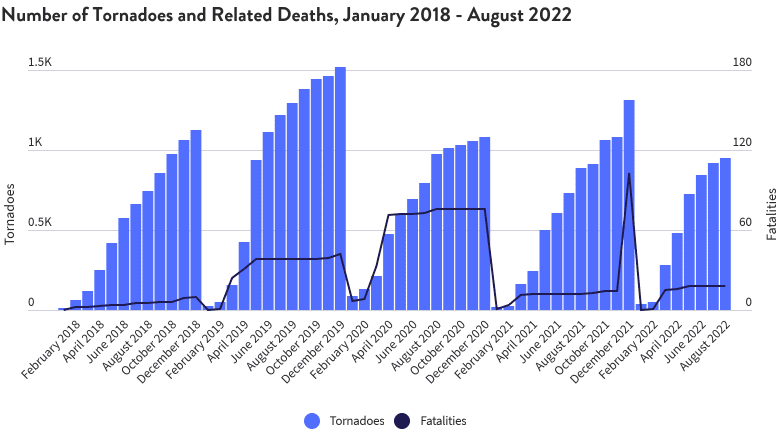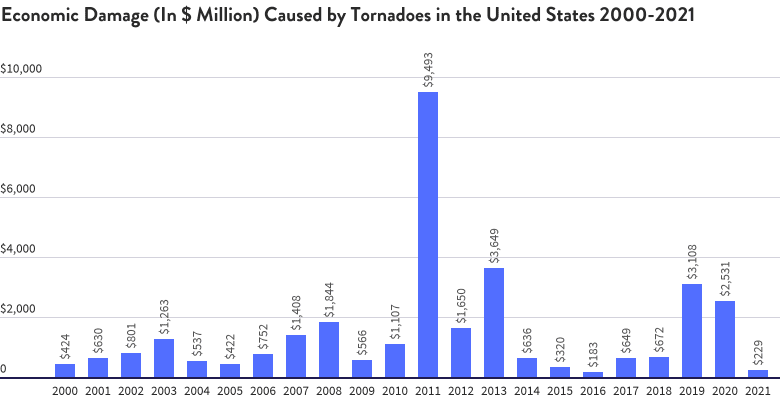Some people, especially those in the Midwest, are familiar with tornadoes. Forming a narrow column of air that touches the ground, tornadoes are the most violent kind of thunderstorm. Rotating winds can exceed speeds of 300 mph. Tornado damage can span more than a mile wide to 50 miles long.
The U.S. experiences over 1,200 tornadoes of varying strength annually. Although every state has experienced one, they most commonly happen in the Great Plains.
A closer look at tornado statistics emphasizes the value of a home insurance policy. There is even greater value in obtaining a home insurance policy for homeowners who live in areas prone to tornado activity.
























